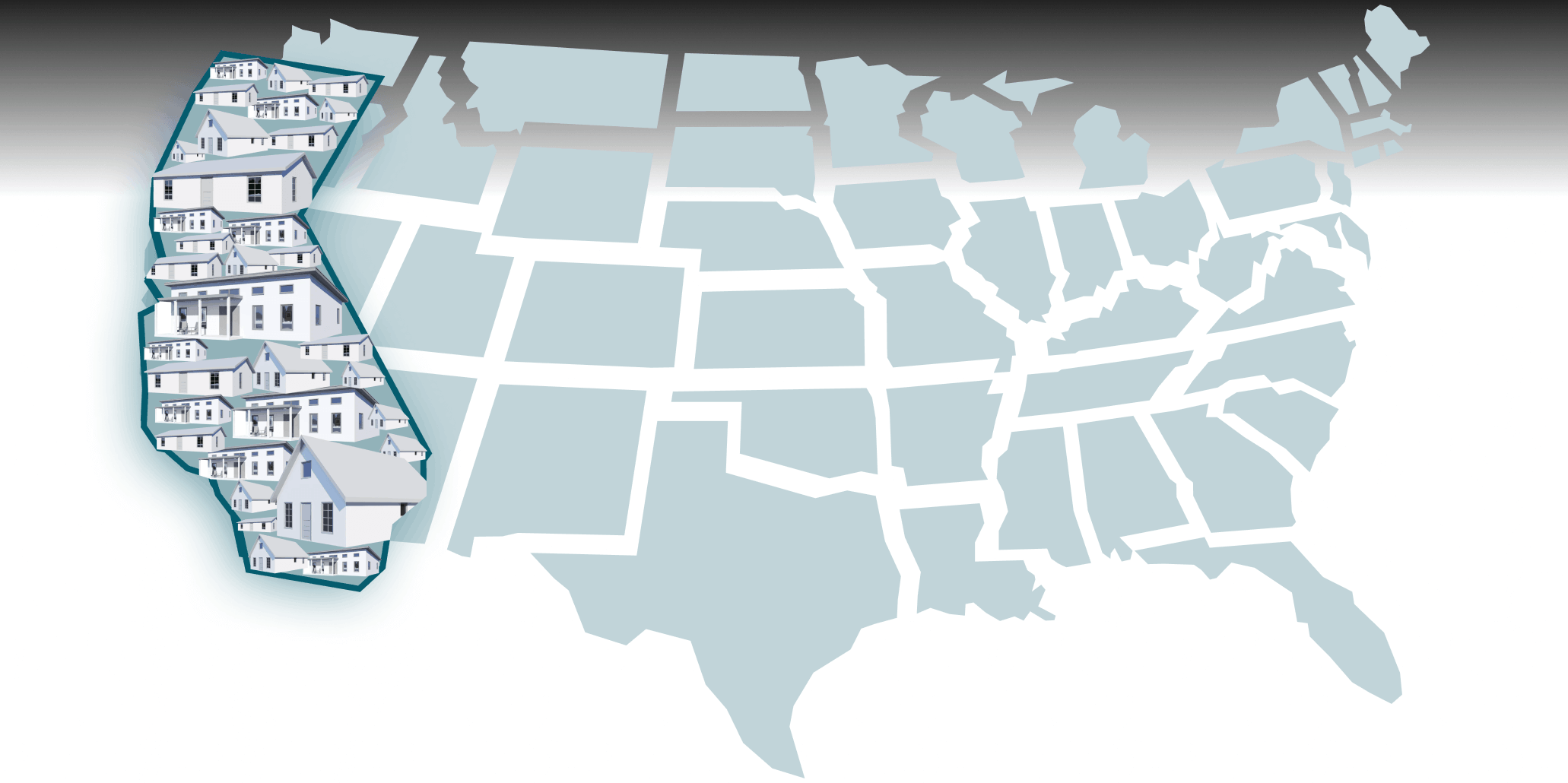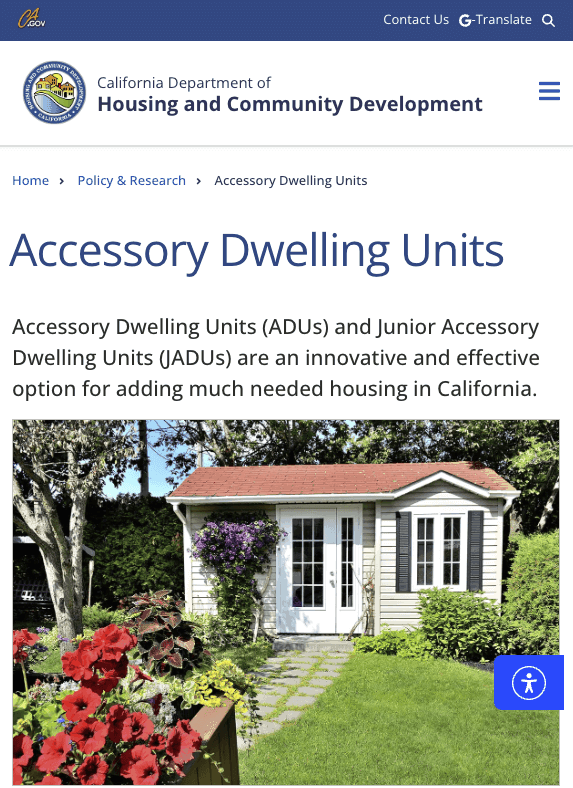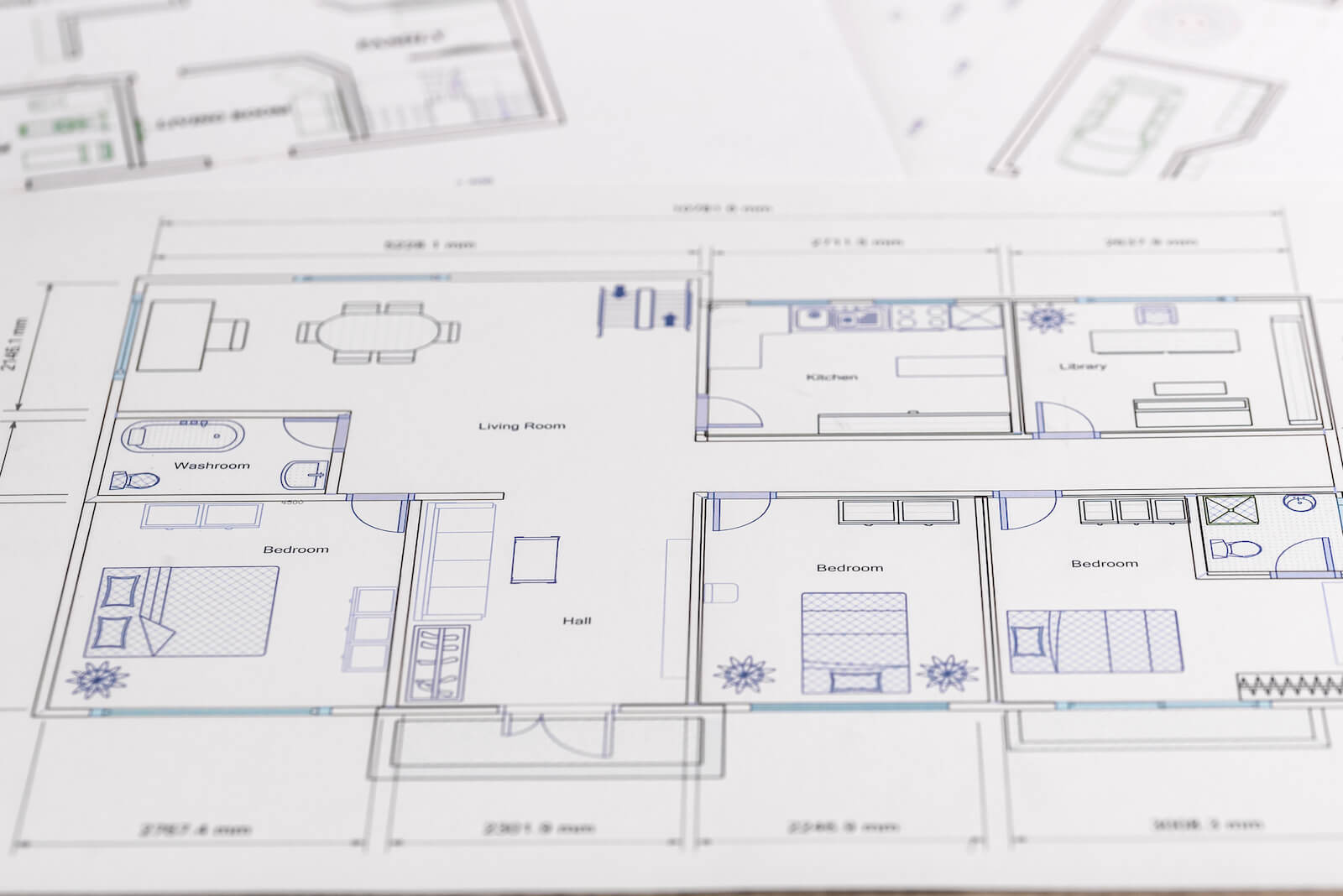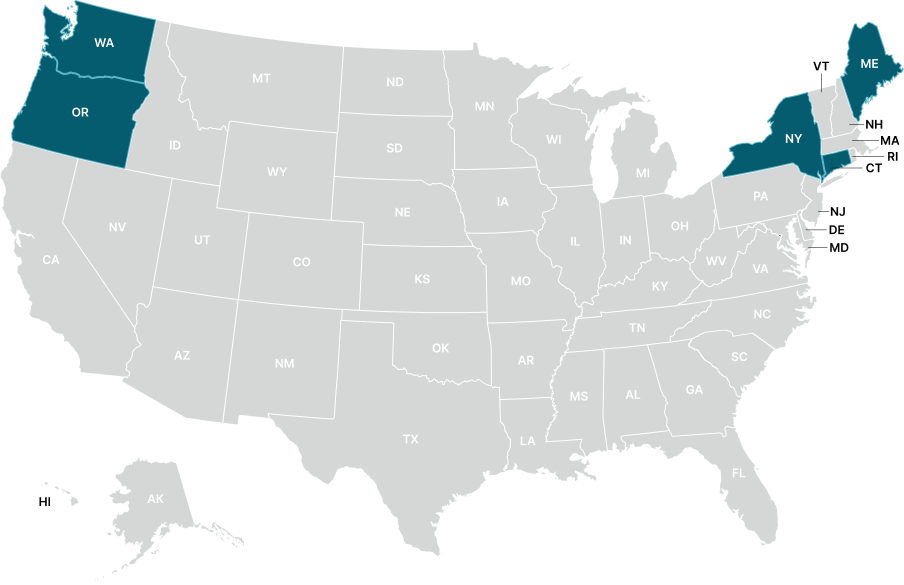

California Embracing ADUs: Requirements to Know
Accessory Dwelling Units (ADUs) are enjoying a golden moment in the Golden State, as homeowners, buyers, and builders address the challenges of the California housing market's soaring costs and low availability.
State and local leaders have been spearheading the adoption of new policies that streamline ADU construction, driving a movement to alleviate the housing shortage and offer more affordable living options.
As California embraces this innovative solution, homeowners and communities alike can benefit from the increased housing flexibility and sustainability of these smaller living spaces.
Read: Accessory Dwelling Units (ADUs) as Airbnb Rentals Make Perfect Sense
Overview of Changes Impacting ADUs
California made several recent changes to ADU policies. These changes aim to simplify the construction process, reduce costs, and encourage more homeowners to build ADUs.
Key changes include streamlined permitting processes, reduced fees, and relaxed zoning laws.
State Policy Overview
California legislators have taken the lead, passing several laws to support the development of ADUs.
|

|
|
|
|
The Housing and Community Development (HCD) department oversees the implementation of these laws. They provide guidelines and support to local governments to ensure consistent application of state regulations.

Zoning Laws
Zoning laws dictate where you can build an ADU on your property. These laws can affect the size, height, and placement of your ADU. For example, some areas may only allow ADUs in certain residential zones or require specific setbacks from property lines.
Permits Required
Like any home construction or major renovation, building ADUs requires permits and inspections to ensure compliance with safety and structural standards.
- Building Permit: Ensures the construction meets safety and structural standards.
- Electrical Permit: Covers the installation of electrical systems.
- Plumbing Permit: Required for plumbing installations.
- Mechanical Permit: Necessary for HVAC systems.
California is working to simplify and speed up the permitting process for ADUs. This includes reducing paperwork and providing clear guidelines to homeowners. State agencies offer resources and support, such as guides, online tools, and workshops, to help homeowners navigate the ADU construction process.
Timelines for Approval
The approval process for ADU permits can vary by location. Generally, it takes three to six months for approval. State laws require local agencies to approve or deny permits within 60 days of receiving a complete application, but areas are struggling to comply with it.
Check with your local land use officials.
Inspection Requirements
Your ADU will need inspections at various stages, such as:
- Foundation: Ensures a stable and compliant foundation.
- Framing: Checks the structural integrity of the ADU.
- Electrical/Plumbing: Verifies proper installation of systems.
Final Inspection: Confirms all aspects of the ADU meet code requirements.Your ADU will need inspections at various stages, such as foundation, framing, electrical/plumbing, and final inspection, to ensure everything meets code requirements.
Common issues during inspections include code violations, incomplete work, and safety concerns. Failing to comply with ADU regulations can result in fines and other penalties. If you have an unpermitted ADU, you may need to take steps to legalize it, which can include paying fines and making necessary upgrades.
ADU Restrictions on Size, Height, and Placement
To bring order to the system, ADUs in California must comply with specific restrictions regarding size, height, and placement.
- Size: ADUs are typically limited to 1,200 square feet.
- Height: Height limits vary but are often around 16 feet.
- Placement: ADUs must meet setback requirements, usually around 4 feet from property lines.
Building Requirements
Size and SpaceADUs need to provide adequate living space while fitting within the property’s limits. They should include essential rooms like a kitchen, bathroom, and sleeping area. For the state of California, one-bedroom ADUs need to be 850 square feet and two bedroom ADUs are required to be at least 1,000 square feet. |
|
Foundation and Structural RequirementsADUs must have a stable foundation and meet structural safety standards. This ensures the unit is durable and safe for occupants. |
|
UtilitiesADUs must have basic utilities like gas, water, electricity, and sewage connections for independent living. In some cities, ADUs can share water lines with the main house, which can save on installation costs. |
|
ParkingSome localities require additional parking for ADUs, while others have reduced or eliminated this requirement to encourage ADU construction. |
|
Fire SafetyADUs must meet fire safety standards. This includes having smoke detectors, fire extinguishers, and safe exit routes. Some areas may also require fire sprinklers. |
|
AccessibilityADUs should be accessible to everyone, including people with disabilities. While it's optional, you can build an ADU to adhere to ADA rules. This would also future-proof the structure and make it more attractive to a larger base. If you have a family member with disabilities, you might need to include some ADA features. This means adding things like ramps for wheelchair access, wider doorways to accommodate mobility devices, and grab bars in bathrooms for extra support. |
|
Energy EfficiencyCalifornia has strict energy efficiency standards. ADUs must comply with these to reduce energy use and costs. This includes using energy-efficient appliances, proper insulation, and possibly solar panels. ADUs built using structural insulated panels, like prefab kits from Mighty Small Homes, can significantly lower heating and cooling costs by up to 60%. |
California ADU Construction

See the construction of a primary residence and an accessory dwelling unit in the Morongo Valley at the foothills of Joshua tree National Park.
Resources for ADU Construction
To encourage ADU construction, some areas offer fee reductions or waivers for permits. This can significantly lower the cost of building an ADU. The cost of a building permit is determined by the approximate value of the construction project and the square footage.
Financing Options
When considering financing options for ADU construction, homeowners have several avenues to explore.
One popular choice is utilizing home equity loans, which allow individuals to borrow against the equity they've built up in their property. These loans provide flexibility for funding ADU projects while leveraging the value of existing real estate assets.

Another option includes ADU-specific loans tailored for construction. These financial products cater specifically to the unique needs and requirements of building an Accessory Dwelling Unit, offering streamlined processes and competitive terms.
Additionally, grants from local governments and organizations present another avenue for financial support. These grants can provide crucial funding assistance, often aimed at promoting affordable housing initiatives or encouraging sustainable development practices within communities.
Taxes and ROI
Building an ADU can impact your property taxes because the new structure increases the property’s value. However, renting out an ADU can provide additional income and can offset that hit while offering a good return on investment (ROI).
Grants, Loans, and Tax Credits
Various financial incentives can help with ADU construction costs:
- CalHome Program
- Local Early Action Planning (LEAP) Grants
- Local Housing Trust Fund (LHTF) Program
- Regional Early Action Planning (REAP) Grants
- SB 2 Planning Grants
- Community Development Block Grant Program (CDBG)
State agencies offer resources and support to help homeowners navigate the ADU construction process. This can include guides, online tools, and workshops.
Uses for Accessory Dwelling Units
ADUs have many potential uses, such as providing space for extended family, creating a dedicated workspace as a home office or workshop, generating rental income through short- or long-term rentals, and offering accommodations for visitors as a guest house.
Design the Perfect ADU
ADUs offer many customization options to fit different needs and preferences. Homeowners can choose from various roofing materials and styles to match the main house or create a unique look.
Installing energy-saving appliances and solar panels can make the ADU more efficient and reduce energy costs. Newly constructed ADUs must have solar panels installed if they're non-manufactured and detached from the main home.
Customizing the interior layout allows for a design that suits specific lifestyles, whether that means an open floor plan, separate rooms, or special features like built-in storage or upgraded kitchen and bathroom fixtures. These upgrades can make the ADU more comfortable and functional, enhancing its overall value and appeal.
Flexible Solutions for U.S. Homeowners

Accessory Dwelling Units (ADUs) are changing how Californians solve housing problems and find affordable living options. State and local leaders have made it easier to build ADUs by updating policies, reducing costs, and simplifying the process.
Other states that are keeping up with California are Oregon, Washington, Connecticut, Maine, and New York.
ADUs can provide space for family, rental income, or a home office. By knowing the new rules, permit needs, and building standards, you can take advantage of this trend. ADUs offer a great way to improve your living space and increase your property value.
Mighty Small Homes simplifies the process of having an Accessory Dwelling Unit (ADU) by offering customizable prefab ADU kits. These kits come in six different designs, allowing you to personalize your ADU with features like windows, doors, porches, and lofts. With energy savings up to 60%, fast construction, and durable materials, Mighty Small Homes makes ADUs accessible and efficient.
See the ADU options available from Mighty Small Homes.
FAQs
ADUs are popular because they provide affordable housing options, help tackle the housing shortage, and offer flexible living spaces for families and renters.
Recent changes include streamlined permitting processes, reduced fees, and relaxed zoning laws to make it easier for homeowners to build ADUs.
Important laws include SB 1069 (2016) for simplifying approval and reducing fees, AB 68 (2019) for allowing additional units, and SB 13 (2019) for eliminating owner-occupancy requirements and reducing impact fees.
You need building, electrical, plumbing, and mechanical permits to build an ADU.
It usually takes three to six months for approval, though state laws require local agencies to approve or deny permits within 60 days of receiving a complete application.
ADUs are typically limited to 1,200 square feet. One-bedroom ADUs need to be at least 850 square feet, and two-bedroom ADUs should be at least 1,000 square feet.
Height limits are often around 16 feet, and ADUs must meet setback requirements, usually about 4 feet from property lines.
ADUs must have a stable foundation, meet structural safety standards, and include essential rooms like a kitchen, bathroom, and sleeping area.
ADUs need connections for water, electricity, sewage, and possibly gas. Planning with utility providers early in the process is important.
Some localities require extra parking for ADUs, while others have reduced or eliminated this requirement to encourage ADU construction.
ADUs must have smoke detectors, fire extinguishers, safe exit routes, and in some cases, fire sprinklers.
While not required, ADUs can be built to follow ADA rules, which include features like ramps, wider doorways, and grab bars for people with disabilities.
ADUs can increase property value, provide rental income, and offer various financial incentives like fee reductions, loans, and tax credits.
ADUs can be used for housing extended family, creating a home office or workshop, generating rental income, and providing guest accommodations.